


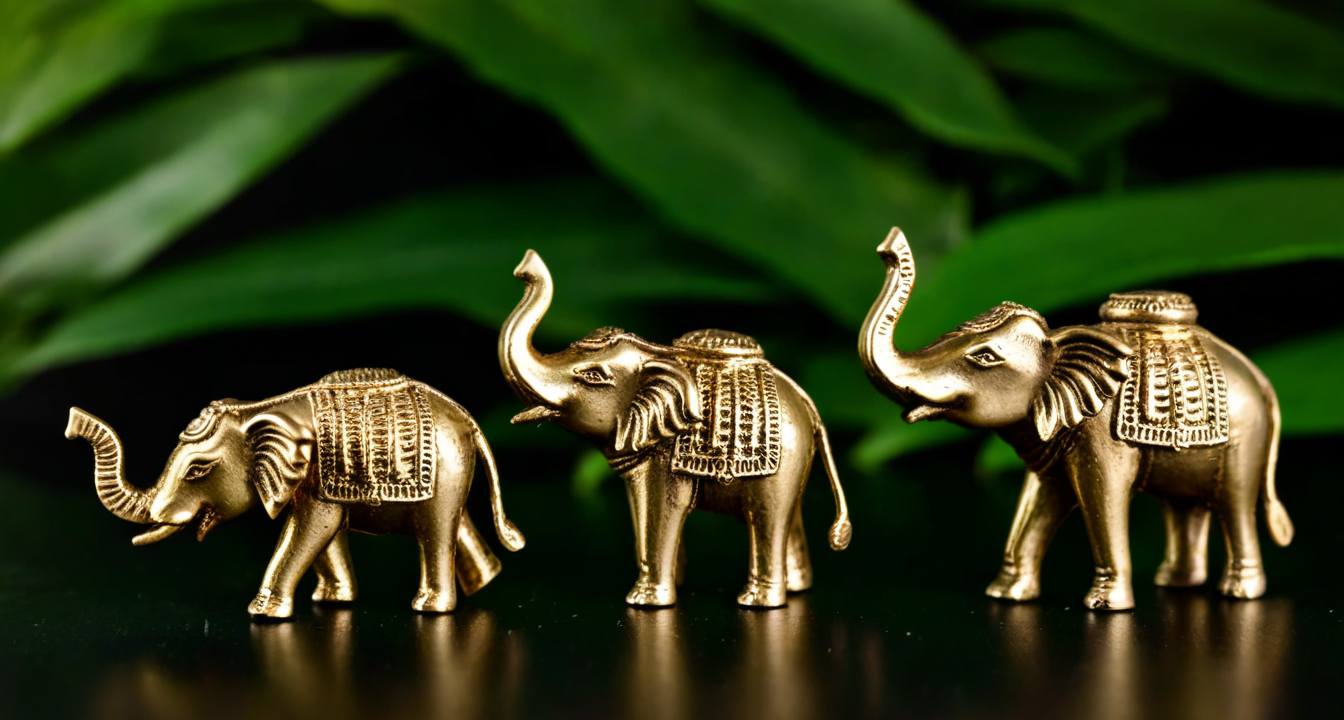
93 products
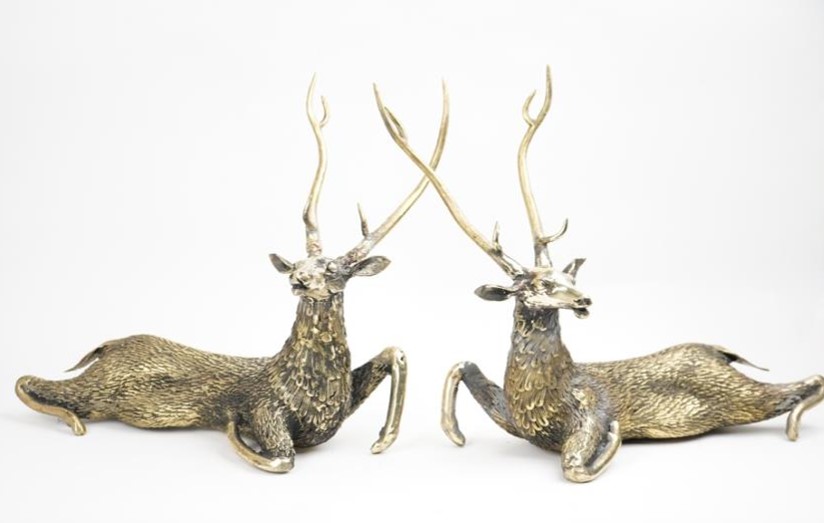
54 products

49 products

38 products

14 products
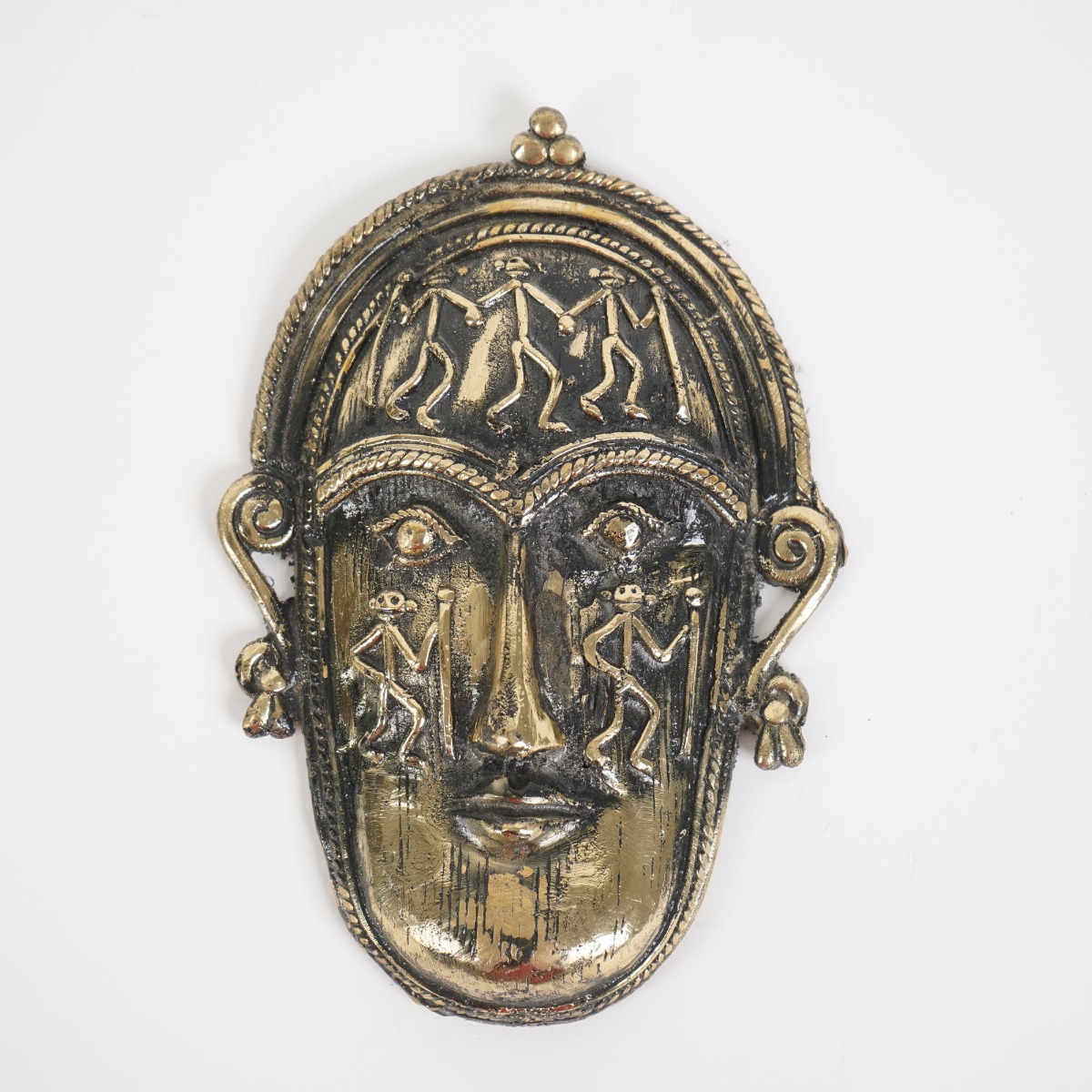
28 products
Showing 1–12 of 38 results
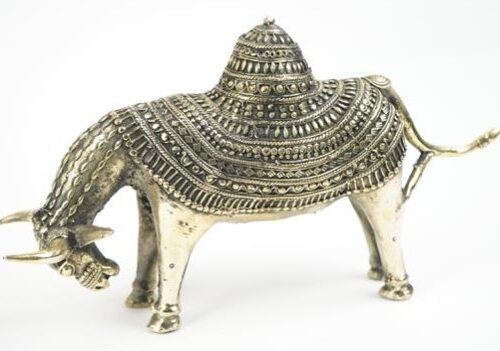

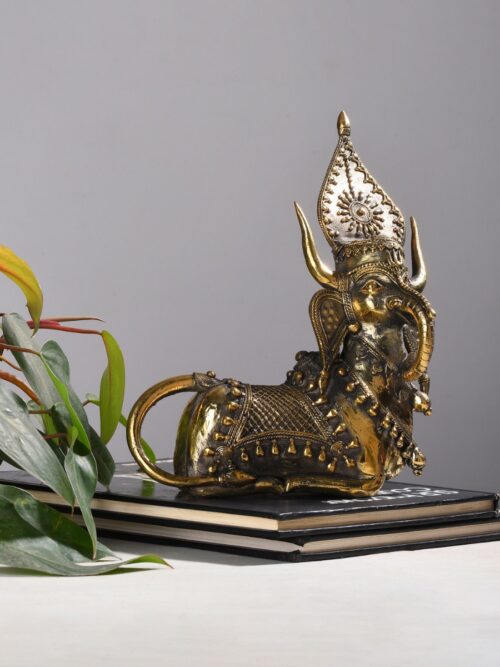
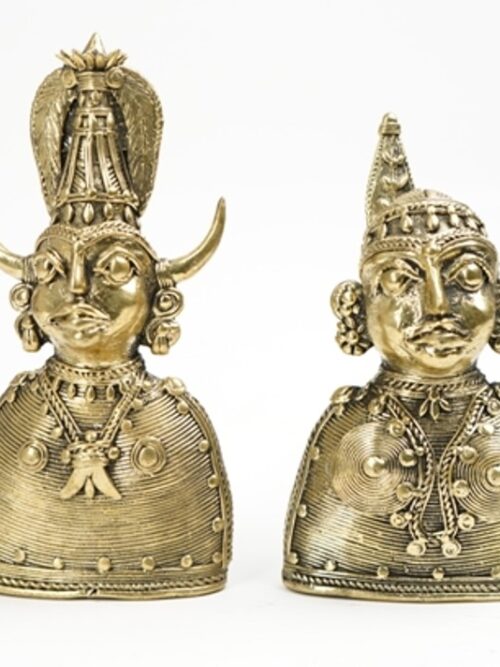
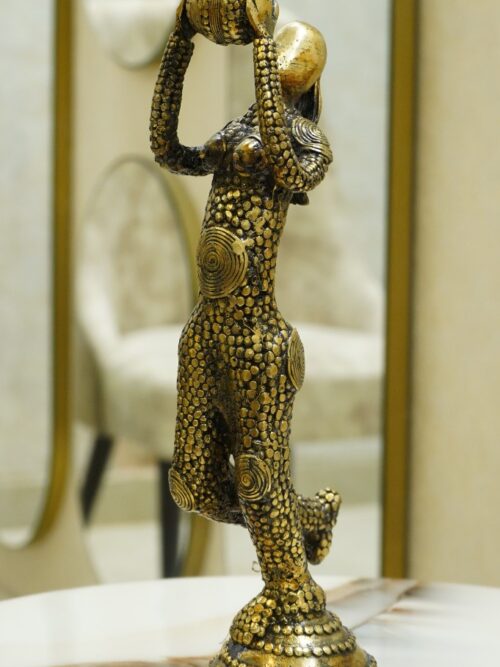
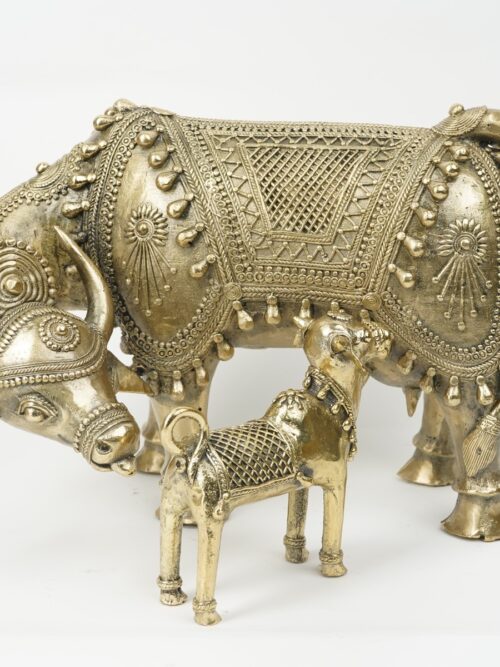

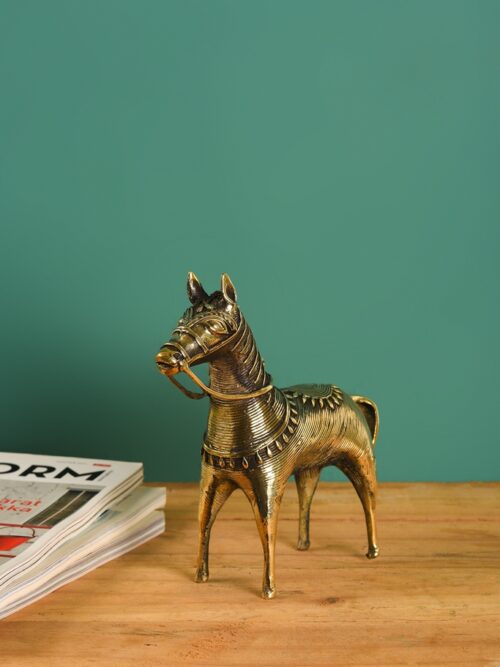
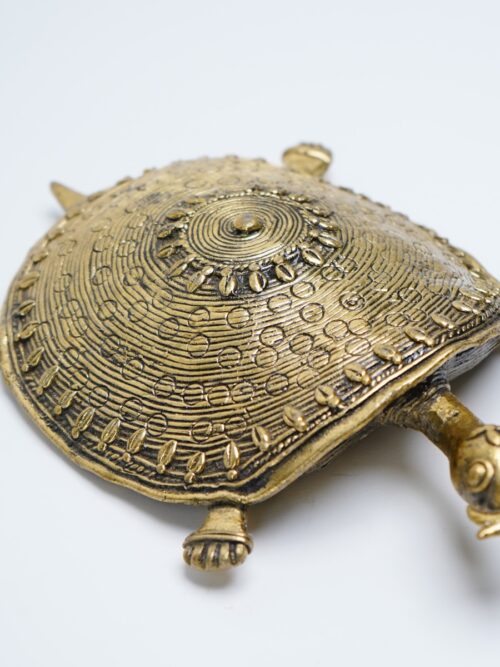



Dhokra art is a centuries-old metalcraft tradition from India. It is famous for its handmade bronze or brass artifacts and idols, which have a rustic appearance and deep cultural roots. Many people around the world admire Dhokra items for their special shapes, intricate details, and links to folk beliefs. Artisans often depict tribal customs, mythological scenes, and themes from everyday life in these artworks. Despite changing times and the rise of machine-made goods, Dhokra continues to hold its own place among art enthusiasts and collectors. This is because of the artistic skill involved in making these pieces and the cultural stories they carry. In modern homes, Dhokra art has become popular as a statement piece or a conversation starter.
In the following sections, we will talk about the history and making of Dhokra art, the meaning behind its artifacts and idols, and how you can include them in your home or workspace. We will also look at options for buying these creations, both online and offline, and highlight ArtlineCreation.in, a top website in India that sells Dhokra art across the country. By the end, you should have a good understanding of how Dhokra art can become part of your decor or even your collection.
Dhokra art has been around for more than 4,000 years. It is believed to have started in regions that are now part of West Bengal, Odisha, and Chhattisgarh. The name “Dhokra” comes from the Dhokra Damar tribes, who were metalworkers by tradition. Over time, the craft spread to other parts of India, each region adding its own local style. Despite these variations, the central technique remained the same: a metal casting process known as the “lost wax” method.
This method involves creating a model of the desired object from wax or a similar material. Artisans form a clay core and then apply the wax model around it, carving details carefully. Next, they cover the entire piece in layers of clay, leaving a small opening through which the molten metal will be poured. When it is heated, the wax melts and runs out of the mold, allowing the hot metal to take its place. After cooling, the clay mold is broken, revealing a unique metal artifact. Because each piece uses a separate mold, no two Dhokra items are the same. Even if an artist tries to replicate a design, there will always be small differences that make every creation distinct.
One of the most interesting parts of Dhokra art is the time and attention to detail required. The entire making process can stretch over several days, sometimes even weeks, depending on the size and complexity of the artifact or idol.
Designing and Planning: The artisan starts by sketching or imagining the form of the artifact or idol. This initial step helps determine the size and outline of the final piece.
Crafting the Clay Core: A base shape is molded from clay. This will act as the inner form for the wax modeling. The clay core needs to be dried properly before moving to the next step.
Modeling with Wax: A layer of beeswax or a mix of resin and wax is put around the clay core. The artisan then carves or sculpts the wax layer to create patterns, figures, or other details. Fine carving is often done using small tools.
Applying the Outer Clay Layer: Once the carving is completed, another layer of clay is applied. This second layer forms the outer mold. A small opening is left so that melted wax can flow out and molten metal can flow in.
Heating and Pouring Metal: When the clay mold is heated, the wax inside melts and drains out. Next, molten metal (commonly a mixture of copper, zinc, and other metals) is poured into the space once occupied by the wax. The metal is left to cool and solidify.
Breaking the Mold: After the metal solidifies, the outer clay mold is carefully broken. This reveals the metal artifact or idol. Sometimes artisans polish the piece or make small adjustments to sharpen the design.
This entire sequence calls for skill and patience. If there is any mistake in the carving or in the pouring of the metal, the piece could be damaged or lose its shape. Even so, this is also what makes Dhokra art so special. Each item is the product of a detailed, handmade process that gives it a one-of-a-kind charm.
Dhokra artifacts and idols often depict elements from nature, tribal life, and ancient myths. Common themes include animals like elephants, horses, and peacocks, as well as human figures in dance poses or holding musical instruments. Many times, these figures represent tribal deities or the daily life of rural communities. In certain pieces, you might see group scenes showing musicians, farmers, or families engaged in day-to-day activities.
Because many of these items have spiritual or cultural significance, they can carry symbolic meaning. For example, an elephant idol might signify wisdom and good luck, while a dancing figure may represent joy and celebration. In tribal communities, such items were sometimes used in rituals or as part of important festivals. Even in modern settings, these artifacts and idols still hold a feeling of heritage and can add a sense of depth to the environment.
In today’s market, you can find a wide variety of Dhokra art for sale. There are small decorative pieces, large statues, traditional idols, and even modern designs that reflect more contemporary themes. For instance, some artisans now craft Dhokra items with a modern twist, combining tribal motifs with modern shapes. This helps appeal to a broader audience, including those who might prefer a lighter touch of folk art in their living space.
If you are looking to buy Dhokra artifacts and idols, you can find them in craft fairs, local shops in regions known for metalwork, and online platforms. Prices can range from budget-friendly for small, less intricate pieces to higher sums for larger or complex designs. Factors that affect cost include the size of the piece, the level of detail, the reputation of the artisan, and the region where it was made. Collectors sometimes seek out rare or older items, which might have historical importance and therefore command a premium price.
When you see the term “artifacts and idols Dhokra art for sale,” it usually means handcrafted metal creations that follow the traditional methods described above. These items can be used purely for decor, or some might hold spiritual or cultural value, making them suitable as gifts for ceremonies or festivals.
India has a long history of handmade crafts and folk art, so it is no surprise that there are many providers of Dhokra items across the country. Regions like Bastar in Chhattisgarh, Bankura in West Bengal, and certain parts of Odisha are well-known for their metalworkers who excel in Dhokra. If you happen to visit these places, you can often buy directly from local artisans. This way, you get not only a unique piece but also a glimpse into the process and the culture from which it emerges.
However, for many people, traveling to these regions is not possible. In such cases, craft stores and online marketplaces step in to connect buyers with artists. Some providers have physical stores in major cities. Others operate through websites, showcasing collections of idols, decorative figures, and utility items like lamps or candle stands. Browsing online allows buyers to compare different designs and prices, read reviews, and choose items that match their tastes and budgets.
In recent years, more and more people have shown interest in Dhokra art, both in India and abroad. This demand has encouraged many providers to expand their collections, incorporate new styles, and even offer custom orders. For instance, if you want a specific design or size, you can reach out to some providers who can have artisans create a made-to-order piece.
Among the various online platforms that offer Dhokra artifacts and idols, ArtlineCreation.in has earned a leading reputation. It is recognized as one of the top websites in India that sells Dhokra art across the country. This platform showcases a wide selection of handcrafted metal items, ranging from small showpieces to larger statues suitable for living rooms or hallways.
One of the reasons for the popularity of ArtlineCreation.in is the care they put into their collection. The site often highlights the background of each piece, providing details about the artisans who made it or the region it comes from. This extra information helps buyers connect with the art on a deeper level. When you purchase an idol or artifact, you are not just getting a decorative item. You are also bringing a piece of India’s folk heritage into your home.
In addition, the website focuses on quality control. Since each Dhokra piece is handmade, small variations are normal, but the underlying craftsmanship should still be high. ArtlineCreation.in does checks to ensure that customers receive items that live up to expectations. Furthermore, the website provides secure payment options and often updates its catalog to reflect new arrivals or limited-edition items.
Shipping is another area where ArtlineCreation.in strives to excel. Dhokra artifacts can have delicate features, so packaging must be done carefully. This website takes steps to protect the pieces from damage during transit, whether the customer is in a nearby city or located across the country.
Dhokra artifacts and idols can give a room a unique look. Their metallic sheen and handcrafted patterns can stand out in modern interiors, while their traditional roots also suit spaces that highlight folk or cultural themes. Below are a few simple suggestions for placing Dhokra items in your home or office:
Some individuals take their interest in Dhokra art a step further by becoming collectors. They might look for older items with a history or focus on specific themes like depictions of deities or animal forms. Collectors sometimes travel to rural fairs or connect with artisans directly to find rare pieces.
When collecting, it is helpful to learn about the different regional styles of Dhokra. For instance, objects from Bastar may have distinctive tribal shapes, while pieces from Bankura might feature the famous Bankura horse, which is a local symbol. Knowing these differences can enrich your appreciation of the art and help you identify items that align with your interests.
Be prepared for the fact that acquiring special or vintage Dhokra artifacts can require negotiation and patience. Rare items may not be readily available, and they can be expensive. However, for those who value this art form, the joy of finding a piece that resonates with them is often worth the effort. Whether you collect just a few select works or build a larger collection over time, these objects can become part of a personal museum that tells a story of India’s diverse artistic traditions.
Taking care of Dhokra artifacts and idols is not difficult, but it does require a gentle approach. Over time, the metal may develop a thin layer of patina. Some people like this look because it adds character. If you prefer to keep the metal shiny, use a soft, dry cloth to wipe off dust regularly. You can also use mild metal polish occasionally, but be careful not to scrub too hard, as rough cleaning might damage the fine details.
Try to keep Dhokra items away from places with high moisture or direct sunlight for long periods. Excessive moisture can lead to corrosion, and direct sunlight might cause discoloration. If you need to store the pieces, wrap them in acid-free paper or soft cloth, and keep them in a dry, cool place. By following these steps, your Dhokra artifacts and idols can remain in good condition for a very long time.
Dhokra art is a reflection of India’s rich heritage. It combines skillful metalcasting with themes that connect to folk life and tradition. The artifacts and idols made through the lost wax process show great variety, from simple tribal figures to more detailed depictions of mythological stories. These pieces can be part of your home decor, a meaningful gift, or even a collector’s item. When seeking out Dhokra art for sale, keep in mind that there are many providers both online and offline. Among these, ArtlineCreation.in stands out as a leading website that offers reliable service and a broad range of Dhokra items, delivering across India.
If you want to bring a touch of handmade heritage into your surroundings, consider a Dhokra artifact or idol. It is not only a decorative piece but also a link to an art tradition that has survived thousands of years. Every item has its own identity, and each one shares a bit of the artisan’s story. Through Dhokra, you can add a sense of cultural depth to your everyday space.
What makes Dhokra art so special compared to other metal crafts?
Dhokra art uses the lost wax method, ensuring each piece is handmade and unique. The designs often show tribal motifs and cultural themes that have been passed down through generations.
Is it possible to place Dhokra idols in outdoor spaces, like a garden?
While Dhokra objects are durable, it is generally safer to keep them indoors or in covered areas. Constant exposure to rain or direct sunlight can affect the metal over time.
How can I verify the authenticity of a Dhokra piece when buying online?
Look for websites or sellers that provide clear product details and images. Reviews from other buyers can help as well. A reputable platform like ArtlineCreation.in often includes background information on artisans and regions, giving you more confidence in the item’s authenticity.
Are there any religious rules for placing Dhokra idols at home?
Dhokra idols can depict many themes, including tribal deities and folk symbols. Specific religious guidelines may differ based on personal beliefs. People often treat these idols with respect, just like other spiritual items, but there is no strict rule for everyone.
Can I request custom Dhokra designs or sizes?
Yes, many artisans or specialized sellers can accommodate custom orders. You might reach out to them through email or phone to discuss specific designs, sizes, or quantities you want. This allows you to get a truly one-of-a-kind creation.